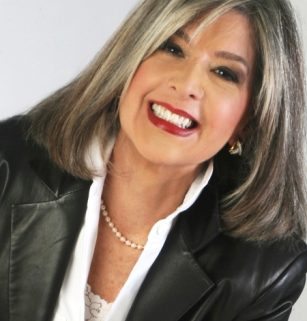A museum curator is killed by a fallen gargoyle, and it’s up to Beckett and team to solve the murder. Castle, being Castle, sneaks a peek at a mummy while visiting a museum with Beckett to inquire about the dead guy’s last moments. Well, it seems that Castle’s little looky-looing was a huge mistake, because inscribed on the burial chamber was, “All who gaze upon the face of the mummy are doomed.” Yep, Castle thinks he’s cursed. Me, I don’t think so. I think the curse bypassed Castle and zeroed in on the writers of this episode.
Sure, the Castle-ish humor was everywhere, but it’s becoming more and more slapsticky every week.
Even Beckett and her joined-at-the-hip partners produced some horrible attempts at fake laughter while Castle stumbled, fell, and was nearly killed by a malfunctioning coffeemaker, all supposed results of the mummy’s curse.
By far, the best thing about this episode was the absence of the FBI character we were forced to endure for the past two weeks. Good riddance. However, I see this as troubling because I’m beginning to find that the good things about what was once a pretty decent show are the things that aren’t in it. Anyway, the police/forensics stuff was better this week because there was very little if it. However, what was there was horrible.
And away we go…
The show opens with a gargoyle dropping from the roof of an apartment building onto the victim’s head. Obviously, it would take quite a while to assemble Beckett and her entourage—someone has to discover the body, call 911, patrol officers show up, a supervisor is called, someone calls the M.E., determine this is indeed a murder, and then call the detectives. You get the point, right? It takes a long time. Well, after all this time has passed by, the victim’s blood was still running down the side of the curb. Was this guy a hemophiliac? Did he have a clotting disorder? And how about the amount of bright red blood at the scene? We only have approximately 5 liters of the red stuff in our entire body, unlike this poor guy who must’ve been filled with at least three or four gallons of the stuff. It was everywhere.
– A member of Team Beckett holds up a baggie containing the victim’s cell phone. There’s a huge amount of wet, red blood inside the bag. What, did someone scoop up a cup of blood and pour it into the bag when they placed the phone inside? You really didn’t need to submerge the phone in liquid. After all, you’re not bringing a goldfish home to your kids. And why was the blood still liquid and still very red?
Lanie Parrish, M.E. was back in rare form last night, with her “discovery” of pollen on the gargoyle—pollen that could only have come from the lowlands of the Yacatan Peninsula. She also found the same substance on death threats mailed to the victim and the museum curator.
First of all, the M.E. doesn’t do this stuff. Scientists in the forensics labs would be the folks who’d make this sort of discovery, if it was even possible to do so. For starters, they’d have to have some idea what they were looking for in order to compare the unknown “substance” to it.
I sort of gave up at this point, because I knew what was coming. The show has become very, very predictable. It seems as if the writers, all of them, write to a certain point in the episode and then quit. Then they allow the M.E., or in the past two episodes, a magic board solve the crime with some earth shattering revelation.
This show cheats the viewer with those magical instant answers to all their problems. There’s no following the detective as she searches for clues. Either the M.E. spouts off some nonsensical babble, or we’re offered a magic board that solves the crime in mere seconds. Either way, the writers of this show must certainly think they’re writing for a group of tree stumps.
Sure, Castle is cool, and funny. And Alexis is precious, but she’s getting older—growing up. But how much longer can she be the “little girl?” And I have a new problem. Beckett doesn’t seem to be the same tough-as-nails cops anymore. Not after playing the submissive role to the FBI agent in the past two weeks. Those episodes nearly destroyed her character for me.
I’m quickly losing interest in this show. It’s luster is fading with every episode.
ABC photos






















